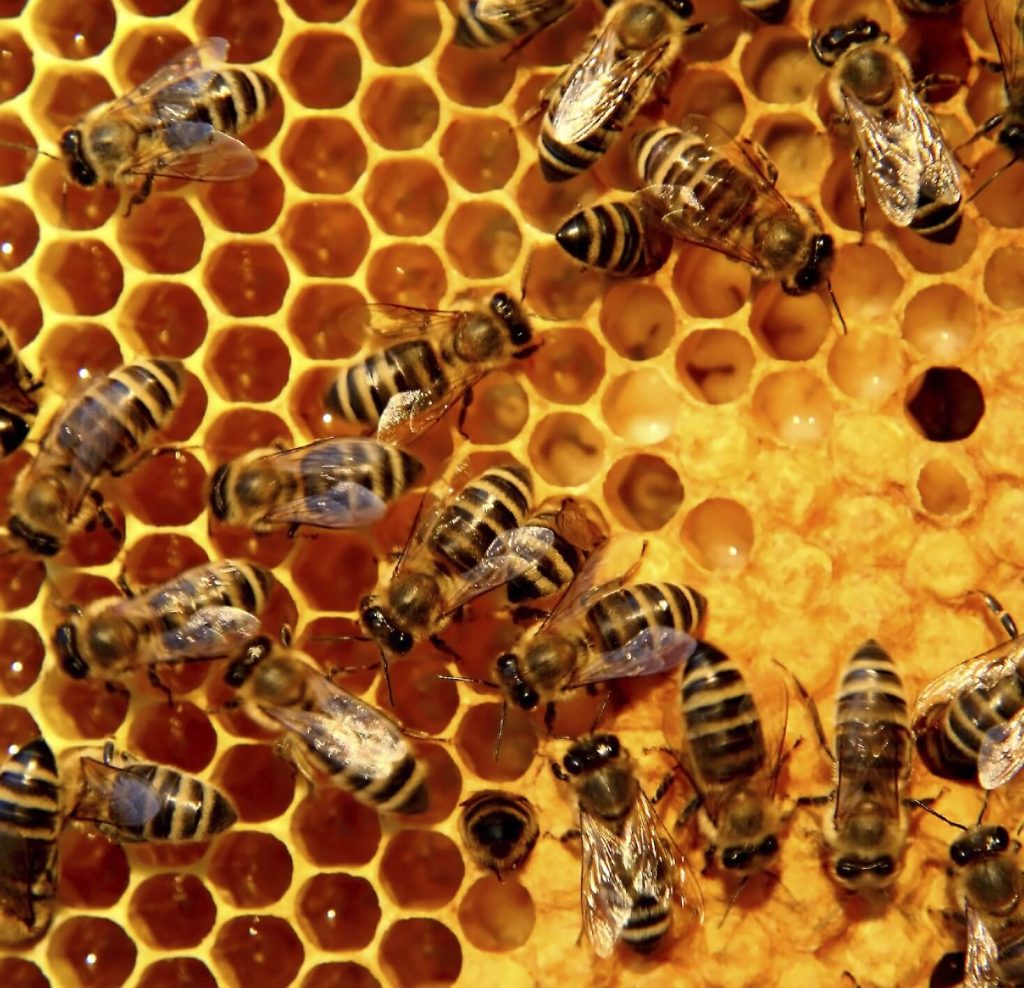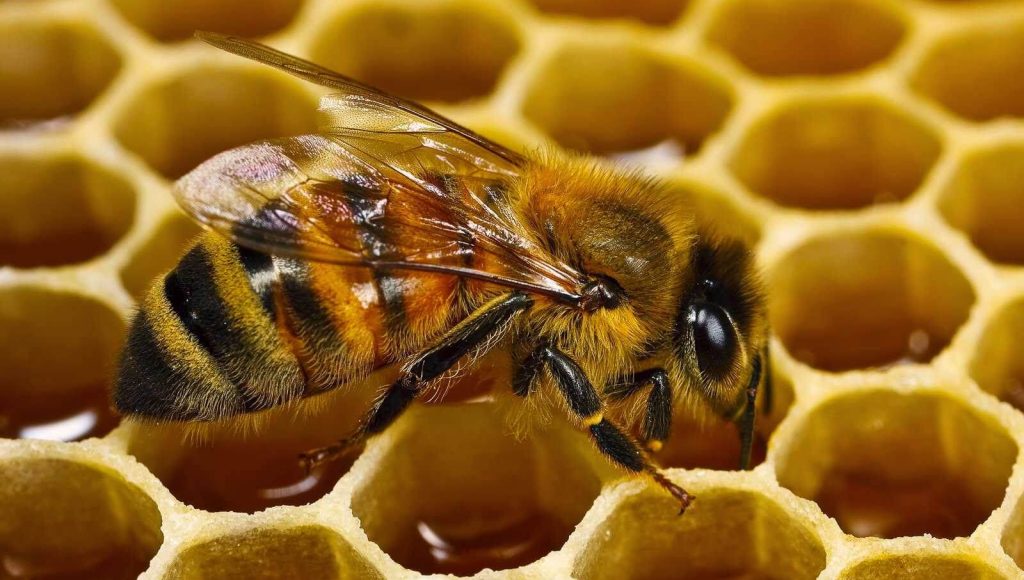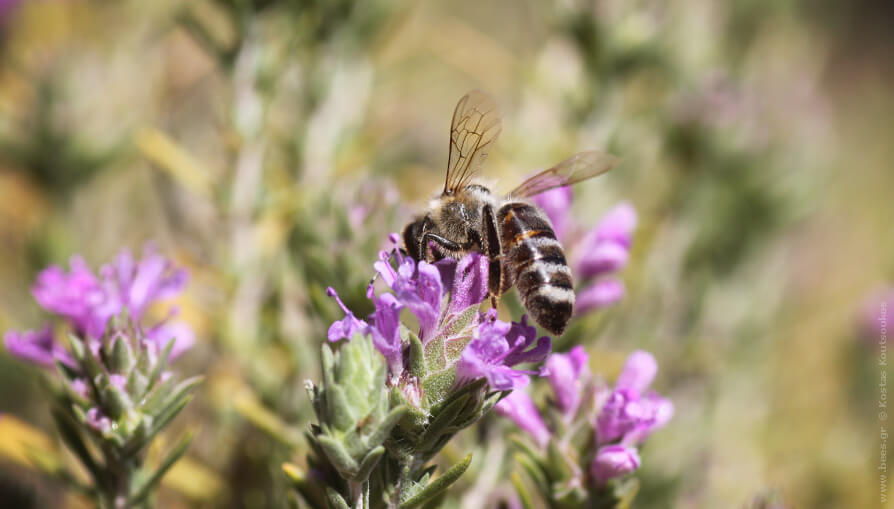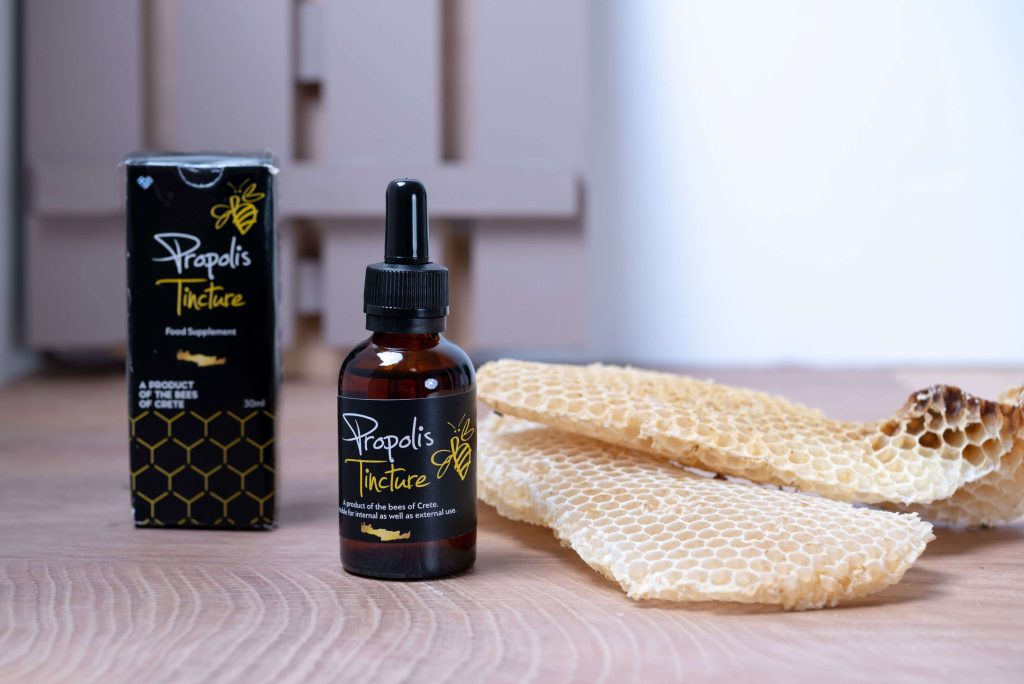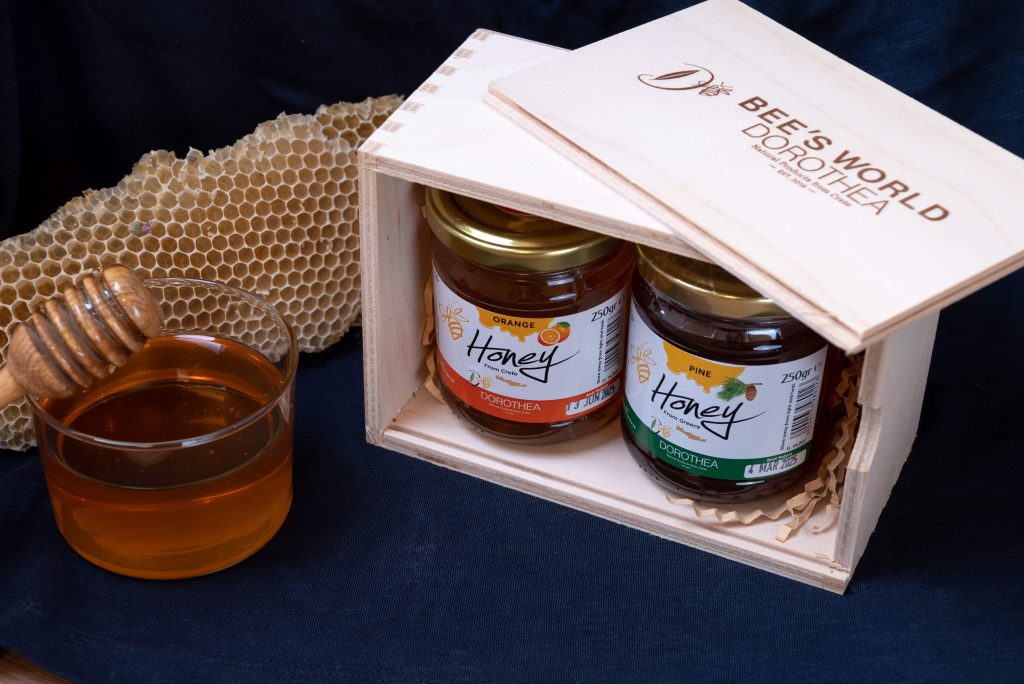BEEHIVE
Bees live in a beehive.
In a beehive, there live the worker bees who do all the work, the male bees called drones, who do not work but live for the fertilization of the queen bee, and the queen, who is the only one to give birth (from spring until fall). She secretes pheromones, which are the connective link within the beehive without them, the colony would fall apart.
The breeding season is 16 days for the queen and 21 days for the worker bees and 24 days for the drones. Around 10.000 bees live in a beehive during winter, whereas the number rises up to 50.000 during summer.
